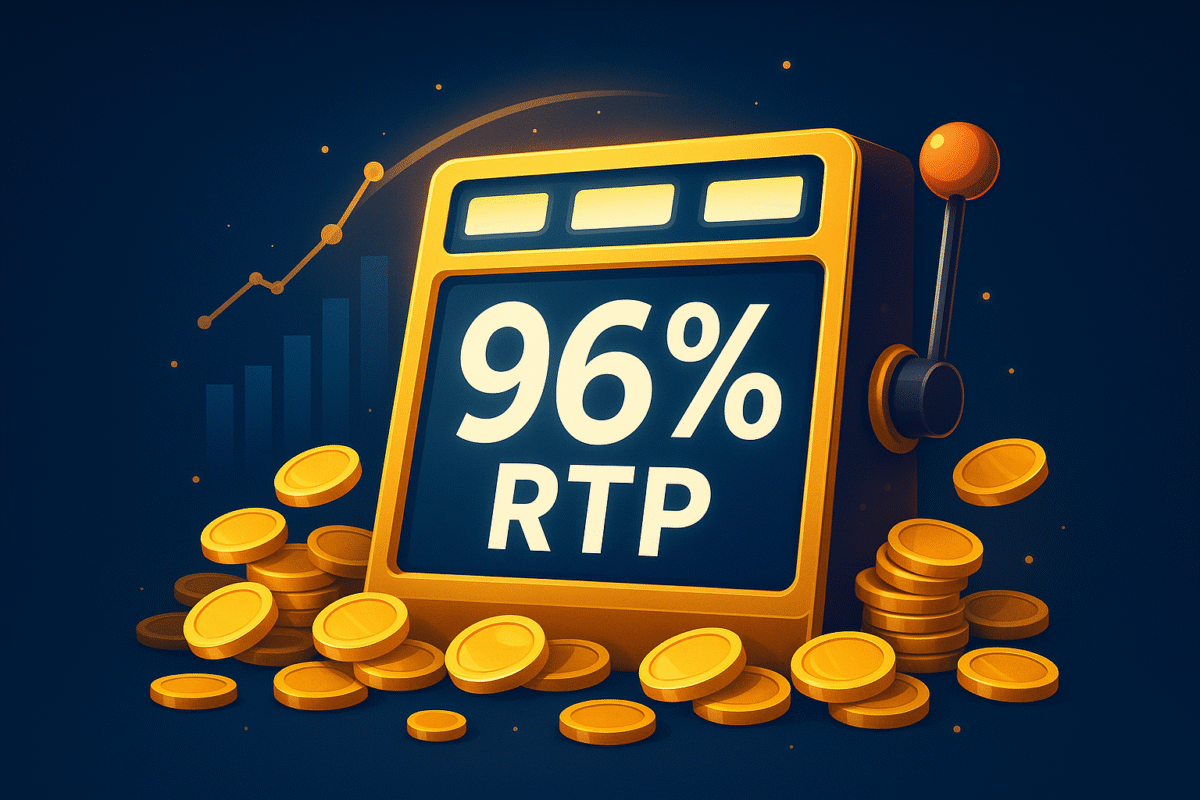Introduction
If you’ve ever wondered why some slot games seem to pay more often than others, the answer usually lies in three letters — RTP, or Return to Player. Understanding RTP is one of the smartest ways to improve your odds and make better gaming choices. Whether you’re chasing jackpots or just looking for consistent wins, learning how RTP works can help you pick the right slot game for your playstyle and budget.
What Is RTP (Return to Player)?
RTP represents the theoretical percentage of total bets that a slot machine will return to players over time.
For example, a slot with 96% RTP means that, on average, it gives back $96 for every $100 wagered — although short-term results can vary wildly.
It’s important to remember that RTP is a long-term average, not a guarantee. Even high-RTP slots can have losing streaks, but statistically, they’re designed to give players a fairer return over extended play.
How RTP Influences Your Gameplay
RTP directly affects how your balance fluctuates during play. Slots with higher RTP:
- Tend to return more of your money in the long run.
- Offer longer playtime and fewer dry spins.
- Are generally preferred by professional and strategic players.
Meanwhile, slots with lower RTP often compensate with bigger jackpots or more volatile gameplay. That means less frequent wins but higher potential payouts when they hit.
High vs. Low RTP: What’s the Difference?
| Type | Typical RTP | Characteristics | Best For |
|---|---|---|---|
| High RTP (96%+) | 96%–99% | Steady, smaller wins | Long sessions, budget players |
| Medium RTP | 94%–95.9% | Balanced volatility | Casual players |
| Low RTP (<94%) | 88%–93% | Rare but huge payouts | Risk-takers and jackpot chasers |
Choosing the right slot depends on whether you value stability or risk. High RTP slots let you play longer, while low RTP games are all about high-risk, high-reward thrills.
Examples of High-RTP Slots in 2025
Some popular titles known for their strong payout rates include:
- Blood Suckers (98%) – NetEnt
- White Rabbit Megaways (97.7%) – Big Time Gaming
- Starburst (96.1%) – NetEnt
- Gates of Olympus (96.5%) – Pragmatic Play
- Mega Joker (99%) – NetEnt
These games are favored by players who prioritize value over volatility and want better odds of walking away with a profit.
Why RTP Isn’t the Whole Story
While RTP is crucial, it’s not the only factor that determines success. You should also consider:
- Volatility: Measures how frequently and how big wins occur.
- Bonus Features: Free spins, multipliers, and scatter triggers can shift the odds.
- Hit Frequency: The rate at which any win occurs, not just large ones.
Combining RTP awareness with these metrics gives you a complete view of a slot’s potential.
How to Check RTP Before Playing
Most reputable casinos display the RTP percentage in the game’s info section or settings. For regulated sites, this number is verified by testing agencies like eCOGRA or GLI.
If it’s not listed, that’s a red flag — always choose transparent providers who publish game data openly.
Conclusion
RTP isn’t just a number — it’s your key to making smarter gaming decisions. By choosing high-RTP slots and understanding how volatility affects outcomes, you can maximize your playtime and your chances of winning. In 2025’s competitive casino landscape, knowledge is your edge — and RTP is where that knowledge begins.
